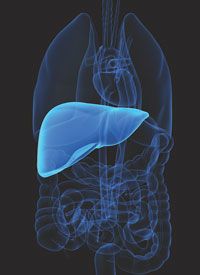Percutaneous and Laparoscopic RFA Outcomes Similar for HCC
Similar recurrence-free survival was demonstrated with radiofrequency ablation using percutaneous and laparoscopic methods for patients with hepatocellular carcinoma who were eligible for ablation.
Liver

Similar recurrence-free survival (RFS) was demonstrated with radiofrequency ablation (RFA) using percutaneous and laparoscopic methods for patients with hepatocellular carcinoma (HCC) who were eligible for ablation; however, improvements in overall survival (OS) were noted with the laparoscopic technique in patients matched using a propensity score, according to findings presented at the 2016 AASLD Liver Meeting.
According to lead investigator Hyuk Soo Eun, MD, laparoscopic RFA (LRFA) may contribute to a drop in recurrences, which could impact mortality. More data and patients are needed to fully validate the results, particularly in the LRFA arm. At this time, the researchers suggest that LRFA could be a better treatment option than percutaneous RFA (PRFA) to enhance the OS of patients with HCC suitable for ablation.
“One of the reasons this study is being conducted is that LRFA may have more precision, accuracy, and securing enlarged safety margin,” said Eun, from the gastroenterology department, Hepatology Division at Changnam National University Hospital in Daejeon, Korea. “It provides easier access in locating the tumor and targeting ablations compared to percutaneous RFA. There is also a reduction in microsatellite recurrence in LRFA.”
HCC incidence and mortality have increased in the past 15 years, stressing the importance of selecting the most precise therapies. To this end, greater LRFA use is warranted, according to Eun. This approach enables the treatment of HCC in difficult locations of the liver with increased accuracy compared with traditional PRFA.
The standard of care for early stage HCC is resection, liver transplantation, and RFA and/or percutaneous ethanol injection, which are all considered curative treatments. In the intermediate stage, transcatheter arterial chemoembolization (TACE) is considered the standard. In the advanced stage, sorafenib (Nexavar) is the standard of care.
In general, LRFA is more invasive than PRFA. Although hospitalization is needed in both cases, the average stay for LRFA is 3 to 5 days compared with 2 to 3 days for PRFA, according to Eun. There have been two notable studies that have compared recurrence rates or survival outcomes between LRFA and PRFA. In the first, LRFA was shown to be a better treatment options for the ablation of larger tumors. The second study showed that LRFA was an equal treatment option to PRFA for overall survival.
For the AASLD study, 244 patients with HCC were enrolled at the Changnam National University Hospital in South Korea. Patients were treated with PRFA (n = 173) or LRFA (n = 71), according to the qualifications for each procedure. The goal of the study was to compare the effectiveness of LRFA and PRFA as treatments for HCC.
Patients were enrolled between April 2005 and October 2016. All patients had recurred after treatment with TACE or hepatic resection and only minor imbalances existed in the patient characteristics between each arms. There were more patients with cirrhotic livers and higher tumor stages in the LRFA arm versus the PRFA group.
Across the full study, a difference was not observed between the 2 treatments for OS and RFS. Prior treatment with TACE was the most significant determinant of outcomes. There were 104 patients in the PRFA arm and 33 patients in the LRFA group who received prior TACE. In these patients, there also was not a significant difference between the treatment modalities.
A propensity score was developed, based on total bilirubin, background liver disease, Child Pugh classification, tumor factors of subcapsular tumor, tumor number, TNM stage, and TACE experience. There were 33 patients in each arm who matched this score. In this subgroup, there was a significant improvement in OS with LRFA versus PRFA. This improvement in survival was shown using both Kaplan Meier and Cox regression analysis, the researchers noted.
Further research will continue to assess potential differences between these treatments. Publication of the full results from the trial will be published in March 2017.
Eun HS, Lee BS, Kim SH, et al. The comparative study of percutaneous radiofrequency ablation with laparoscopic radiofrequency ablation on overall survival and recurrence of hepatocellular carcinoma. Presented at: AASLD Liver Meeting; Bonston, Massachusetts, November 11-15, 2016. Abstract 3.
<<<



